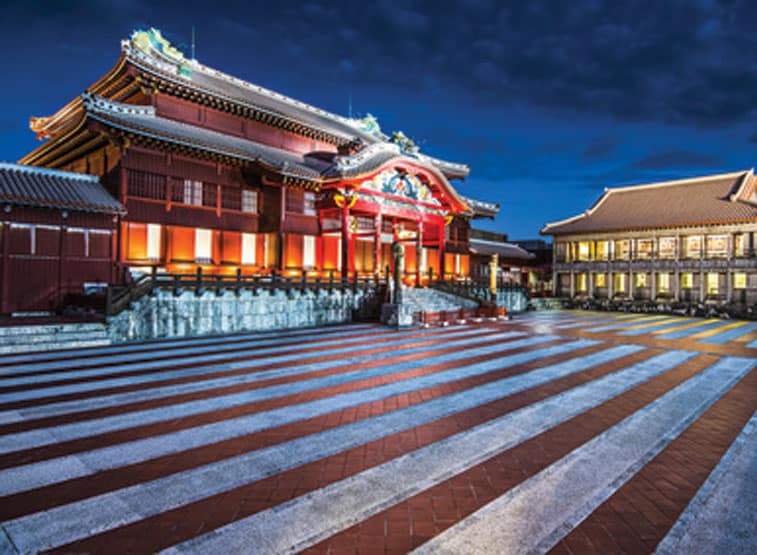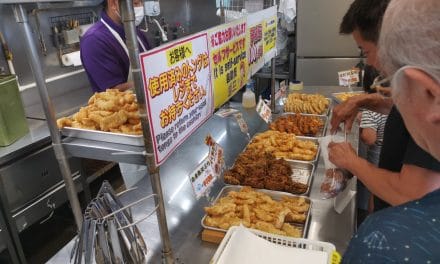The year 2015 marks, according to eastern or Chinese astrology, the year of the sheep. It’s thought to be a time of peace, contentment and creativity, as well as a time to travel, take risks, and appreciate family and friendships. Whether or not you follow eastern horoscope, one thing is certain: with the new year comes new opportunities to learn and explore the world and its cultures, including Japan’s.
There are few countries more steeped in tradition than Japan, and that is particularly evident in all the preparations and customs for its biggest holiday of the winter season: The New Year. While many countries celebrate with fireworks displays and parties on New Year’s Eve, Japan’s celebrations last at least three days, and include customs like cleaning the house from top to bottom, preparing symbolic dishes that are only eaten during the holiday, and making visits to shrines as well as family and friends’ houses.
On the next pages, we’ve listed Japan’s most popular New Year’s traditions, and explained their cultural significance. Use this guide as a starting point to understanding some of the sights and celebrations you may encounter this holiday season, and to go beyond wishing others “Akemashite Omedetou!” (Happy New Year!).
Ceremonies
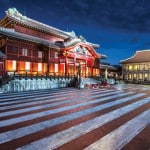 Most Japanese visit a Shinto shrine or Buddhist temple sometime between January 1-3. During this first visit, called “hatsumode,” many visitors dress in colorful kimono. Once there, they usually ring a bell, clap twice, and pray for prosperity and peace for the year. In Okinawa, many visit Shuri Castle (left), whose New Year’s festival includes a reenactment of the Ryukyu Kingdom’s New Year’s ceremony, traditional dance and prayers for prosperity.
Most Japanese visit a Shinto shrine or Buddhist temple sometime between January 1-3. During this first visit, called “hatsumode,” many visitors dress in colorful kimono. Once there, they usually ring a bell, clap twice, and pray for prosperity and peace for the year. In Okinawa, many visit Shuri Castle (left), whose New Year’s festival includes a reenactment of the Ryukyu Kingdom’s New Year’s ceremony, traditional dance and prayers for prosperity.
Mochi
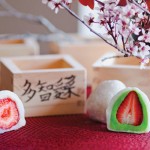 Though it can be purchased throughout the year, mochi is traditionally a New Year’s food. People visiting shrines on New Year’s Day take turns pounding rice in large wooden bowls with mallets, as water is added, forming the soft, glutinous texture of the mochi rice cake. Mochi can also be colored and flavored or filled with ingredients like fruit, custard or red bean paste.
Though it can be purchased throughout the year, mochi is traditionally a New Year’s food. People visiting shrines on New Year’s Day take turns pounding rice in large wooden bowls with mallets, as water is added, forming the soft, glutinous texture of the mochi rice cake. Mochi can also be colored and flavored or filled with ingredients like fruit, custard or red bean paste.
Decor
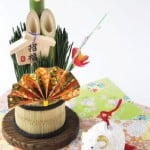 You might notice some interesting decor at the entrances of many homes and other buildings. Called “kadomatsu,” the arrangements usually consist of bamboo stalks, pine tree branches and rope, plus other embellishments. Kadomatsu welcome the Shinto gods and offer a temporary place for them to reside, as the gods were thought to live in trees. The bamboo stalks are three different heights, and represent, from tallest to shortest, the heavens, humanity and earth. The rope signifies that the home or building has been purified to welcome the gods. As such, cleaning one’s home from top to bottom is also a Japanese New Year’s custom.
You might notice some interesting decor at the entrances of many homes and other buildings. Called “kadomatsu,” the arrangements usually consist of bamboo stalks, pine tree branches and rope, plus other embellishments. Kadomatsu welcome the Shinto gods and offer a temporary place for them to reside, as the gods were thought to live in trees. The bamboo stalks are three different heights, and represent, from tallest to shortest, the heavens, humanity and earth. The rope signifies that the home or building has been purified to welcome the gods. As such, cleaning one’s home from top to bottom is also a Japanese New Year’s custom.
Giving Money
 On New Year’s Day, Japanese people traditionally give money to children. Elders obtain crisp, new bills from the bank, fold them into three sections, and place them in specially decorated envelopes, called “pochibukuro.” The custom of giving money to children, called “otoshidama,” is not limited to family; close friends, neighbors and even teachers often give to children when they visit on or after New Year’s Day. Children generally receive money until they finish high school, and older children tend to receive more money than younger siblings.
On New Year’s Day, Japanese people traditionally give money to children. Elders obtain crisp, new bills from the bank, fold them into three sections, and place them in specially decorated envelopes, called “pochibukuro.” The custom of giving money to children, called “otoshidama,” is not limited to family; close friends, neighbors and even teachers often give to children when they visit on or after New Year’s Day. Children generally receive money until they finish high school, and older children tend to receive more money than younger siblings.
Osechi
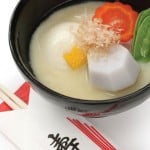 Besides mochi, other foods are customarily eaten during New Year’s. This special fare, called “osechi-ryori” or just “osechi,” includes seaweed, fish cakes, mashed sweet potato with chestnut, and black soybeans. The foods symbolize what eaters wish for in the new year, including joy, health and good fortune. On New Year’s Eve, many eat buckwheat soba, as the noodles represent long life. The most auspicious New Year’s food is ozoni (left), a clear broth made with mochi and regional vegetables and ingredients. It is believed that eating ozoni will surely bring one success in the new year.
Besides mochi, other foods are customarily eaten during New Year’s. This special fare, called “osechi-ryori” or just “osechi,” includes seaweed, fish cakes, mashed sweet potato with chestnut, and black soybeans. The foods symbolize what eaters wish for in the new year, including joy, health and good fortune. On New Year’s Eve, many eat buckwheat soba, as the noodles represent long life. The most auspicious New Year’s food is ozoni (left), a clear broth made with mochi and regional vegetables and ingredients. It is believed that eating ozoni will surely bring one success in the new year.
Ringing Bells
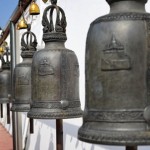 Many places throughout the world celebrate the moment the new year begins with fireworks. If you live anywhere near a Japanese Buddhist temple, you might instead hear bells tolling to literally ring in the new year. During this traditional bell ringing, called “Joya no Kane,” the bells are rung exactly 108 times, representing the 108 earthly temptations that Buddhists believe humans must overcome to achieve nirvana.
Many places throughout the world celebrate the moment the new year begins with fireworks. If you live anywhere near a Japanese Buddhist temple, you might instead hear bells tolling to literally ring in the new year. During this traditional bell ringing, called “Joya no Kane,” the bells are rung exactly 108 times, representing the 108 earthly temptations that Buddhists believe humans must overcome to achieve nirvana.
![]()

